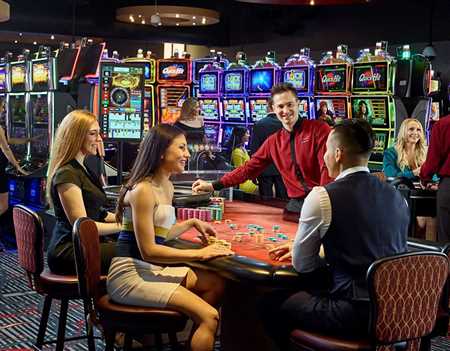

The evolution of establishments dedicated to chance-based activities reveals a captivating narrative of societal change, innovation, and cultural significance. As different eras embraced the thrill of risk-taking, these venues have transformed dramatically, shaping the landscape of entertainment and leisure. Each phase in this storied timeline reflects not only advancements in technology but also the shifting attitudes towards fortune and skill.
Beginning with rudimentary settings where individuals gathered to test their luck, this tale unfolds through lavish halls adorned with opulence, ultimately culminating in a digital era that transcends geographical boundaries. The fascinating interplay between regulation, social acceptance, and the ever-growing desire for excitement has been pivotal in steering the trajectory of these establishments throughout history.
As we delve into this intriguing saga, we will explore significant milestones, innovations, and cultural impacts that have defined the world of chance-based amusements. From the ornate interiors of decades past to the accessibility offered by contemporary platforms, the story of wagering venues is a testament to humanity’s enduring attraction to risk and reward.
This section explores the captivating journey of wagering activities, tracing their evolution from their origins in the vibrant streets of Venice to the dazzling lights of Las Vegas. It highlights the transformation of these pastimes, showcasing how they have shaped cultures, economies, and social interactions throughout history.
In the 17th century, Venice emerged as a hub for those seeking to partake in games of chance. The city’s ornate structures and lively atmosphere provided the perfect backdrop for establishing the earliest known establishments. These venues attracted individuals from all walks of life, eager to test their luck and engage in thrilling competitions.
As societies evolved, so did the landscape of these activities. The allure of chance spread across Europe, influencing various regions with distinct customs and practices. During this period, laws and regulations began to emerge, reflecting society’s complex relationship with risk and reward. This era set the stage for further advancements and innovations in the field.
The 20th century brought about monumental changes, especially in the United States. Las Vegas became synonymous with entertainment and excitement, leading to the establishment of a bustling industry that drew millions of visitors. The glitzy resorts and extravagant shows redefined the experience, merging leisure with opportunities for luck.
In recent years, technological advancements have dramatically altered the landscape once again. New platforms have emerged, allowing individuals to engage in their favorite pastimes from almost anywhere in the world. This shift has created a diverse and dynamic environment, appealing to a wide audience and offering endless possibilities for enjoyment.
Through this rich historical tapestry, one can observe the enduring fascination with risk and the evolving nature of human entertainment. This legacy continues to thrive, reflecting societal changes and technological advancements that shape how people engage with chance activities today.
The emergence of establishments dedicated to leisure and chance can be traced back to a time when society sought venues for entertainment and social interaction. These early gathering places provided an escape from daily life, where individuals could indulge in various activities that often involved risk and reward dynamics. The concept of such venues laid the groundwork for what would later evolve into organized systems of play.
As these establishments flourished, they began to adopt distinct characteristics that set them apart from other social venues. The introduction of rules and formal structures marked a significant shift, transforming casual play into a more structured form of entertainment. This evolution not only appealed to the wealthy elite but also paved the way for the establishment of regulations that would govern such activities in the years to come.

The establishment known as the Ridotto marked a significant milestone in the evolution of recreational activities centered around chance. This innovative venue emerged in Venice and was designed to provide a structured environment for participants seeking entertainment and social interaction through various games.
Originally launched in 1638, the Ridotto offered a unique blend of amusement and regulation, attracting numerous individuals from all walks of life. Its creation was influenced by a desire to control and oversee communal engagements, ensuring both safety and decorum.
The Ridotto was distinctive in its approach, as it was one of the earliest examples of a regulated space devoted to leisurely pursuits. Patrons could indulge in their favorite games while being assured of a certain level of oversight, which was a revolutionary concept at the time.
Over the years, the Ridotto’s influence extended beyond its immediate surroundings, inspiring similar establishments across Europe. It represented a fusion of entertainment, societal norms, and governance, setting the framework for future ventures in this realm.
The growth of betting venues has significantly influenced societies over the centuries, shaping economies and cultures alike. As these establishments proliferated, they became centers of entertainment, attracting a diverse clientele and fostering social interactions. This evolution is marked by various milestones that reflect changes in regulations, technology, and public perception.
Throughout history, geographical expansion has played a critical role in the proliferation of these venues. Various regions embraced this form of entertainment, contributing to its widespread acceptance and integration into societal norms.
This dynamic landscape continues to evolve, with each era bringing new opportunities and challenges. As establishments adapt to changing preferences, they remain integral to both local economies and global entertainment trends.
The evolution of entertainment venues has traveled a remarkable path, moving from opulent European establishments to grand American structures. This transformation reflects changes in societal values, cultural influences, and emerging trends in leisure activities.
In Europe, the early institutions provided a space where the elite would gather, showcasing luxury and sophistication. These halls were characterized by:
As time progressed, the concept of such venues spread across the Atlantic, leading to the construction of magnificent palaces in America. These American establishments brought their unique flair, integrating aspects of local culture while maintaining the essence of their European predecessors. Key features included:
This shift not only altered the architectural landscape but also redefined social gatherings, making them accessible to a broader audience. The blend of European elegance and American exuberance created an unparalleled experience, marking a significant chapter in the narrative of leisure and extravagance.
The transformation of recreational wagering activities has witnessed a remarkable journey through history, shaped by technological advancements and societal changes. Initially, participants engaged in these activities in physical locations, where social interactions and a tangible atmosphere defined the experience. Over time, the rise of digital technology introduced new dimensions, enabling enthusiasts to participate from the comfort of their own homes while expanding access to a global audience.
This shift from traditional venues to virtual platforms has revolutionized how enthusiasts engage with their favorite pastimes. Innovations such as mobile applications and interactive websites have enhanced user experiences, providing convenience, variety, and immediacy. Today, this digital evolution continues to redefine the landscape, offering immersive environments that simulate real-life interactions through sophisticated graphics and live streaming, thus bridging the gap between physical and virtual experiences.
The evolution of recreational wagering has significantly shifted from traditional brick-and-mortar venues to expansive virtual environments. This transformation has not only altered the landscape of entertainment but also redefined how enthusiasts engage with various forms of chance-based activities.
As technology advanced, accessibility became a central theme, allowing participants to enjoy their favorite pastimes from the comfort of their homes. Innovations such as mobile applications and user-friendly websites have made these experiences more convenient and tailored to individual preferences.
Moreover, the introduction of secure payment systems and sophisticated algorithms has fostered a sense of trust among users. This sense of security encouraged a growing audience to explore a wide range of options, from interactive games to live dealer experiences, thereby enriching the overall engagement.
The digital realm has also provided a platform for community-building, where players can connect, share strategies, and participate in live events, enhancing the social aspect of recreational wagering. As this sector continues to adapt to rapidly changing technologies, the future promises even more innovative and immersive experiences for participants around the globe.